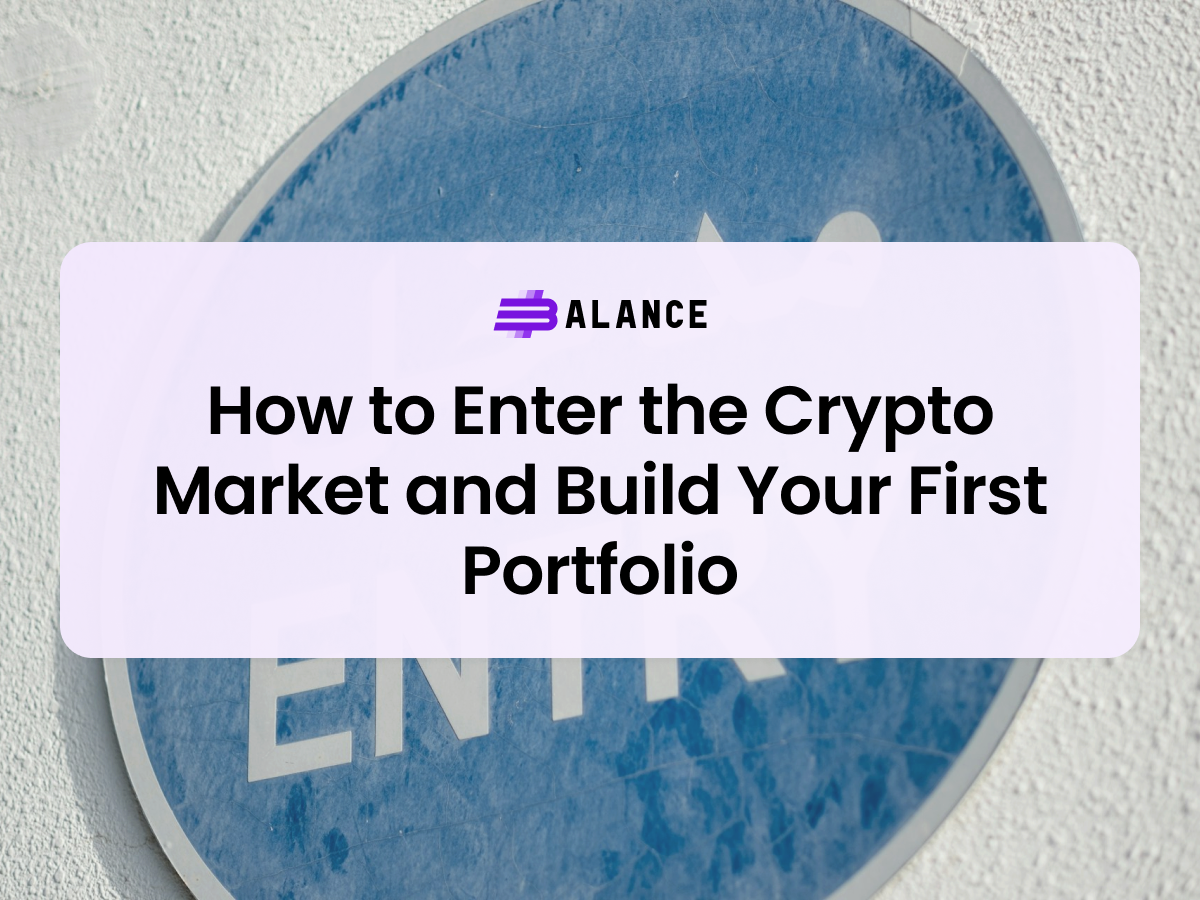Entering the world of crypto can be both exciting and overwhelming. With countless assets to choose from, constant market fluctuations, and a lot of vocabulary to learn, building your first crypto portfolio might seem daunting, but it’s easier than you think!
Let’s go over some basics.
What Is a Crypto Portfolio?
A crypto portfolio is simply a collection of digital assets, such as Bitcoin, Ethereum, and other cryptocurrencies, that you own. Like a traditional investment portfolio, your crypto portfolio reflects your financial goals, risk tolerance, and investment strategy.
The goal is to balance potential growth with managing risk by carefully selecting and monitoring your assets.
Crypto is held in a wallet and is traded on CEXs and DEXs—centralized or decentralized exchanges.
Choosing a Wallet and an Exchange: The Basics
Before diving in, you’ll need a wallet and an exchange to buy, sell, and store your assets.
What Is a Wallet?
A crypto wallet is where you securely store your digital assets. There are two main types:
Hot Wallets:
- Connected to the internet, making them convenient for frequent transactions
- Best for active traders or beginners looking for ease of use
Cold Wallets:
- Offline wallets that provide maximum security against hacks
- Best for long-term holders or storing large amounts
What Is an Exchange?
Exchanges are platforms where you buy, sell, and trade cryptocurrencies. There are two primary types:
Centralized Exchanges (CEXs):
These are managed by a centralized company, often user-friendly and beginner-focused.
- Advantages:
- High liquidity and fast transactions
- Intuitive interfaces
- Often include added services like staking and savings
- Risks:
- You don’t have full control of your funds since the platform holds your private keys
Decentralized Exchanges (DEXs):
DEXs allow peer-to-peer trading directly from your wallet with no middleman.
- Advantages:
- Full control of your funds
- Access to a wider variety of tokens, including lesser-known projects
- Risks:
- Gas fees can be higher
- Requires more knowledge to use effectively
Top Tips for Forming Your First Crypto Portfolio
- Start Small:
Invest only what you can afford to lose. Even the most experienced traders face risks. - Diversify:
Spread your investments across several cryptocurrencies rather than putting everything into one. - Do Your Research:
Before adding a cryptocurrency to your portfolio, research its purpose, use case, and team. Projects with strong fundamentals tend to perform better over the long term. - Set Clear Goals:
Are you investing long-term or looking to trade in the short term? Your strategy will dictate the kind of portfolio you build.
Important Things to Remember
There can be a lot going on when it comes to the cryptoverse, but here are a few things worth keeping in mind!
Volatility: Crypto prices can swing dramatically. Be prepared for ups and downs.
Security: Anything digital, including crypto, can have vulnerabilities. Be sure to do your research and understand the risks before investing.
Regulation: Ensure you comply with local regulations, such as tax requirements, to avoid legal complications.
Education: Keep learning! The crypto space evolves rapidly, and staying informed will help you adapt. 3Balance blog about everything crypto portfolio management and our second, Qoda blog, are great resources for that!
Three Methods for Managing Your Portfolio
Like with TradFi, there are plenty of ways to manage your crypto portfolio. Your strategy will depend on your knowledge, risk tolerance, and other factors. What’s most important is having one, understanding your tolerance, and sticking to it! Here are a few common ones:
HODL (Hold On for Dear Life)
HODL is when you buy cryptocurrencies and hold them long-term, regardless of market fluctuations. Traders who believe in the long-term potential of their assets typically follow this strategy.
Rebalancing
This is when you adjust your portfolio to maintain a desired allocation or percentage of assets. It helps keep your portfolio aligned with your goals and risk tolerance and can help you capitalize on market shifts.

Try 3Balance now. It is free!
Manage your crypto portfolio like a Pro: set up your ideal allocations, swap multiple tokens in one flow and much more. Check it out!
Active Trading
Active training involves regularly buying and selling assets based on market conditions to maximize short-term gains. It is recommended for traders who are comfortable with higher risk and have the time to monitor the market closely.
Enter the Market with Confidence!
Building your first crypto portfolio might feel intimidating, but by starting small, diversifying, and using effective management strategies, you’ll be well on your way to navigating the crypto world! Just don’t forget to rebalance and stick to your strategy.

